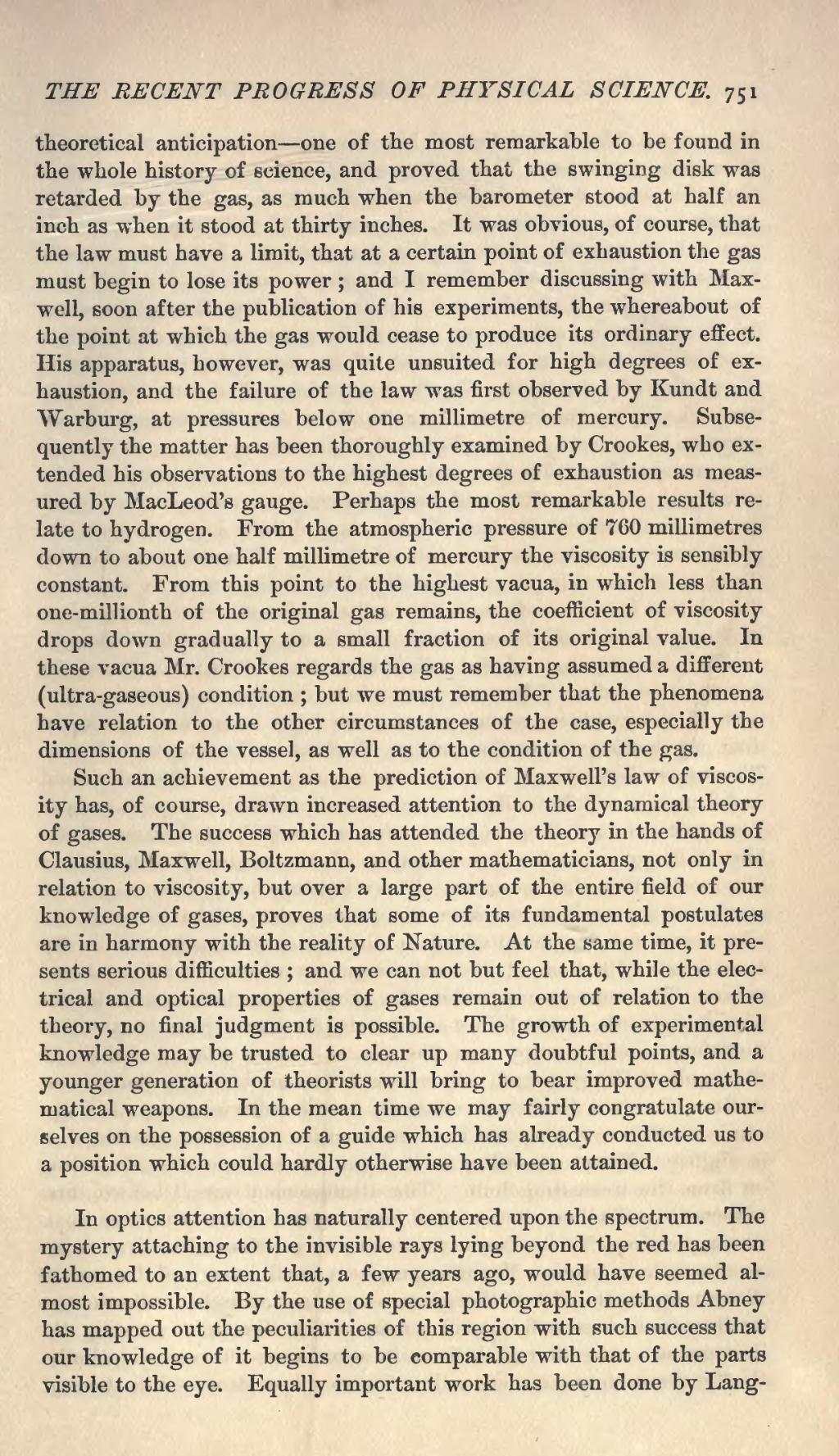theoretical anticipation—one of the most remarkable to be found in the whole history of science, and proved that the swinging disk was retarded by the gas, as much when the barometer stood at half an inch as when it stood at thirty inches. It was obvious, of course, that the law must have a limit, that at a certain point of exhaustion the gas must begin to lose its power; and I remember discussing with Maxwell, soon after the publication of his experiments, the whereabout of the point at which the gas would cease to produce its ordinary effect. His apparatus, however, was quite unsuited for high degrees of exhaustion, and the failure of the law was first observed by Kundt and Warburg, at pressures below one millimetre of mercury. Subsequently the matter has been thoroughly examined by Crookes, who extended his observations to the highest degrees of exhaustion as measured by MacLeod's gauge. Perhaps the most remarkable results relate to hydrogen. From the atmospheric pressure of 760 millimetres down to about one half millimetre of mercury the viscosity is sensibly constant. From this point to the highest vacua, in which less than one-millionth of the original gas remains, the coefficient of viscosity drops down gradually to a small fraction of its original value. In these vacua Mr. Crookes regards the gas as having assumed a different (ultra-gaseous) condition; but we must remember that the phenomena have relation to the other circumstances of the case, especially the dimensions of the vessel, as well as to the condition of the gas.
Such an achievement as the prediction of Maxwell's law of viscosity has, of course, drawn increased attention to the dynamical theory of gases. The success which has attended the theory in the hands of Clausius, Maxwell, Boltzmann, and other mathematicians, not only in relation to viscosity, but over a large part of the entire field of our knowledge of gases, proves that some of its fundamental postulates are in harmony with the reality of Nature. At the same time, it presents serious difficulties; and we can not but feel that, while the electrical and optical properties of gases remain out of relation to the theory, no final judgment is possible. The growth of experimental knowledge may be trusted to clear up many doubtful points, and a younger generation of theorists will bring to bear improved mathematical weapons. In the mean time we may fairly congratulate ourselves on the possession of a guide which has already conducted us to a position which could hardly otherwise have been attained.
In optics attention has naturally centered upon the spectrum. The mystery attaching to the invisible rays lying beyond the red has been fathomed to an extent that, a few years ago, would have seemed almost impossible. By the use of special photographic methods Abney has mapped out the peculiarities of this region with such success that our knowledge of it begins to be comparable with that of the parts visible to the eye. Equally important work has been done by Lang-
